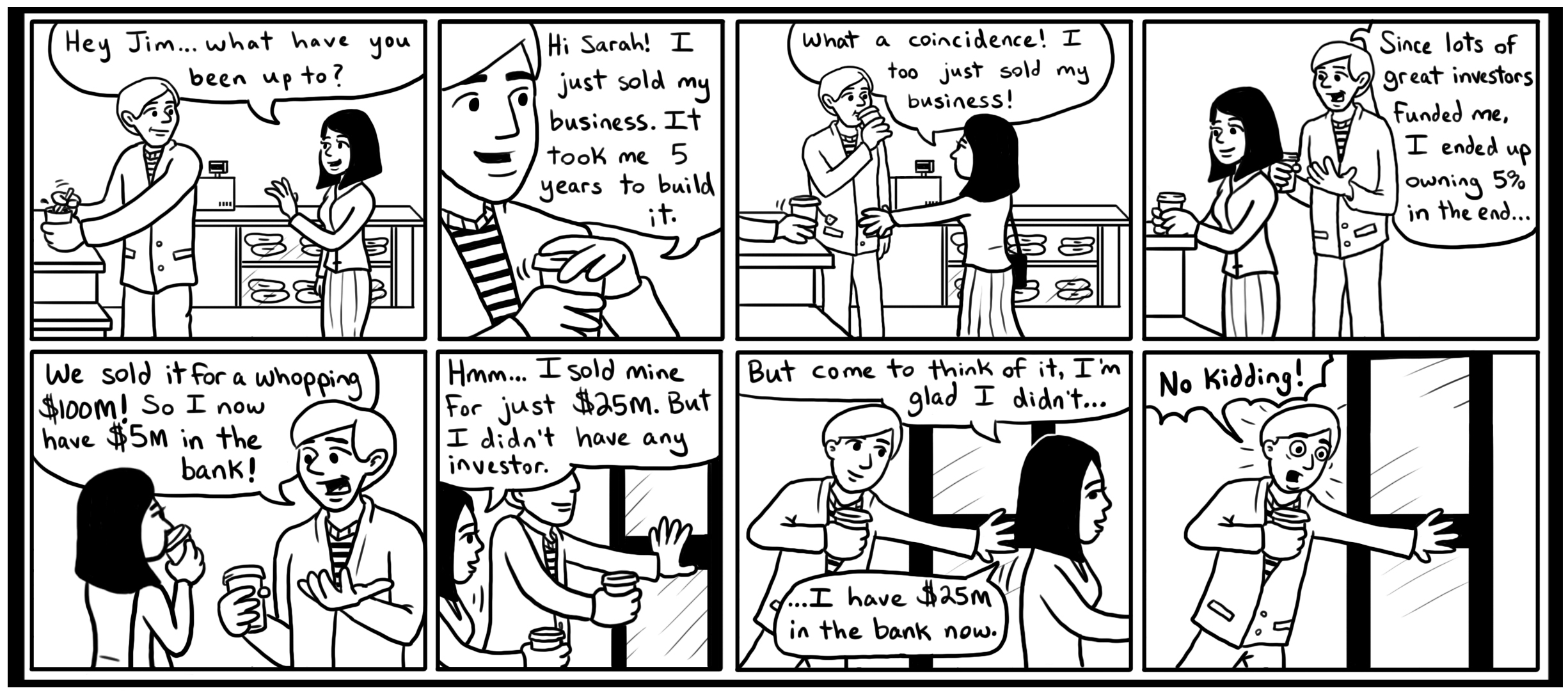Opinions
Best of Bootstrapping: The Buy Side of Bootstrapping to an Exit

I am sure you are following the Bootstrapping to Exit (let’s call it B2E) articles. Last time, I showed you some case studies of larger companies who are acquiring bootstrapped startups.
In this post, I will double-click down on the buy-side psychology of the B2E phenomenon.
Best of Bootstrapping: Some Bootstrapping to Exit Case Studies

You have, presumably, read my recent article Bootstrapping to Exit. As a follow-up, let me offer you some case studies.
From Freshworks Has Acquired Nine Capital Efficient Startups:
All the nine acquisitions by Freshworks have been for undisclosed amounts. Cloud-based video collaboration platform 1CLICK, acquired in 2015, was founded in 2012 and had raised an undisclosed seed round from Blume Ventures and The Chennai Angels in 2014.
Best of Bootstrapping: Bootstrap First and Raise Money Later

I wrote a book called Billion Dollar Unicorns a few years back. Writing this book took me through the extensive process of talking to entrepreneurs who have built tech companies with valuations above a billion dollars. While there is a tremendous amount of serendipity involved in any extraordinary success story, one recurring theme comes up in these case studies. I am particularly excited to share this nugget because it applies broadly to all classes of entrepreneurial ventures.
Bootstrap first, raise money later.
That’s what Fred Luddy did when he founded ServiceNow back in 2005. Leveraging his domain knowledge and expertise in IT ServiceDesk software, he rapidly acquired 12 customers before raising funding. Initially, he started charging $25 per seat and the 12 customers paid up. He raised $2.5 million in venture capital WITH 12 customers, and ample validation.
Best of Bootstrapping: Excess is NOT Required for Success

Let’s do a thought experiment.
List all the things you want to do with your life if you had additional resources.
How many of these require additional money?
How much additional money do you need to acquire to afford these things?
How many of these require additional time?
Best of Bootstrapping: Do NOT Go to VCs as Beggars – Go as Kings

Negotiation is a straightforward game. You can only negotiate if you have options.
A long time ago, when I was a young entrepreneur making my way in Silicon Valley, I found myself at the mercy of people who knew I had no option.
I did not have a Green Card.
My negotiating leverage was limited, almost non-existent.
And people took advantage of me.
Best of Bootstrapping: How Can You Play this Low-Probability Game Intelligently?

Let me start with a quote from Marc Andreessen:
“At our venture capital firm we only invest in a sort of Silicon Valley–style tech. We see 3,000 inbound deals a year. And those are inbound and coming through our referral network, so those are sort of prequalified. We can do maybe 15 or 20 investments out of the 3,000 a year. So I like to say our day job is crushing entrepreneurs’ hopes and dreams. Our main skill is saying no, and getting people to not hate us.”
Source: Inside the mind of Marc Andreessen – Fortune Management
Best of Bootstrapping: Why is Bootstrapping Important?

If you haven’t already, please study our Bootstrapping Course and Investor Introductions page.
Over the last decade and more, I’ve had the privilege of working with a large number of bootstrapped entrepreneurs. These include self-financed companies and also modestly capitalized startups that operate in a capital-efficient manner applying the principles of bootstrapping. [You can review my Bootstrapping Course to recap these.]
For our Seed Capital series of podcasts and blog interviews, I’ve interviewed hundreds of investors, especially micro-VCs and angels who are playing and important role in the early stage game.
Man and Superman: Augmentation of the Human Brain

As automation devastates the fundamental economic model of the human civilization, we are faced with the option of augmenting the human brain such that ALL unskilled, low-IQ humans become upgraded.
I wrote on this topic last year: Man and Superman: Can Displaced Blue Collar Workers Become Doctors?
Since then, Elon Musk has made public statements about Neuralink, his venture to connect the human brain to computers.
